North Carolina is a southeastern state well known for its history of flight, the Great Smoky Mountains, and for being the birthplace of Pepsi-Cola. But another awesome thing about North Carolina is the many beautiful, beneficial plants that are native to the region.
This North Carolina native plants list will help you decide which native plants will do best when you want to attract birds to your garden or landscape. There are actually over 700 native species that are bird-friendly, but we don’t have room to share them all here, so we picked some of our favorites and we hope that will get you started choosing the best plants for your own garden.
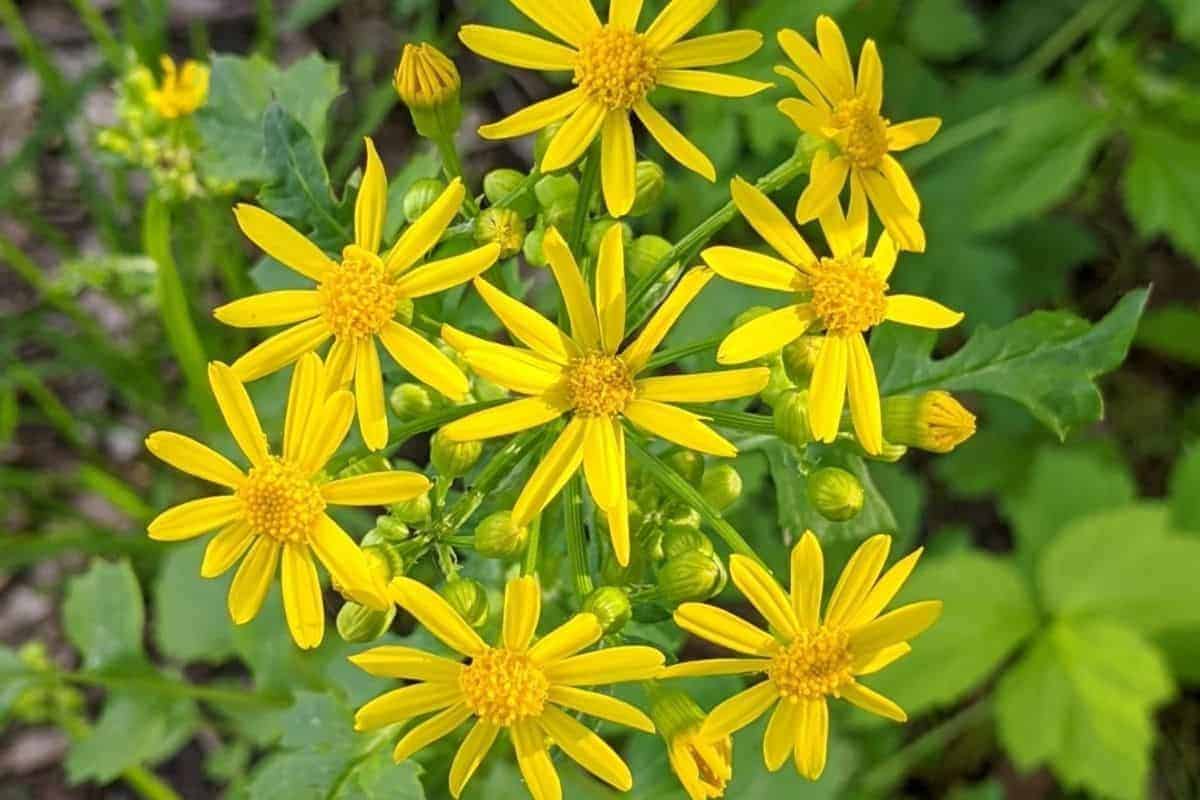
North Carolina Native Plants List
This North Carolina native plants list will help you choose plants for your garden or landscape that are friendly to native birds and other local wildlife.
1. Carolina wild petunia (Ruellia caroliniensis)
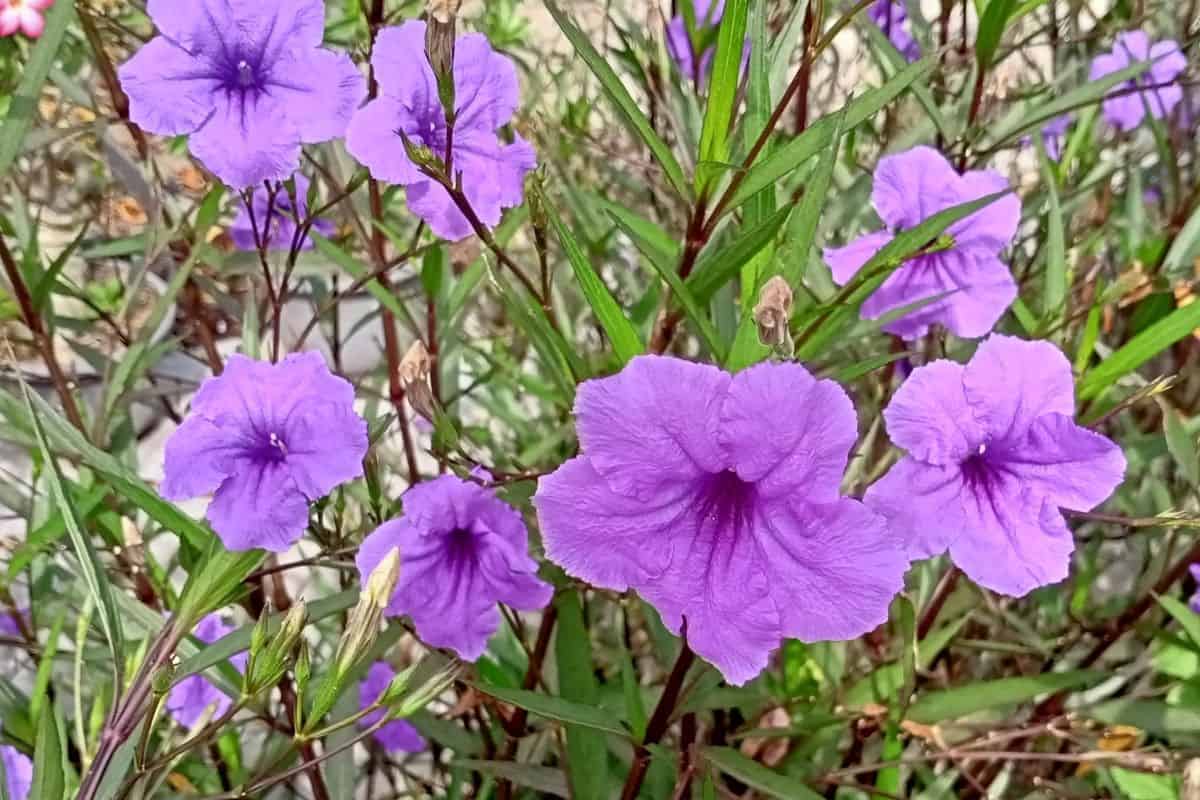
Carolina wild petunia is a bird favorite and also a beautiful flower that will look amazing in your garden. It grows 2-3 feet tall, is unbranching, and has flowers that grow in clusters of 2 to 4.
The light purple flowers will open, usually only one or two per day. It grows 1-3 feet tall and blooms from June to August. It prefers part shade and moist, dry soil. It will also do well in sandy soil.
2. Carolina lupine (Thermopsis villosa)
Carolina lupine is a 3-to-5-foot perennial that has a few short branches. It’s part of the pea family and has yellow flower spikes that are 4 to 18 inches long. They bloom from May to June and also have a 1-to-2-inch fruit.
This plant requires medium water and moist soil, and full sun to part shade for best results. It likes humus-rich, well-drained soil and you may need to water it some in the summer if it’s dry. It’s a great ornamental flower and will provide late spring color to your garden or landscape.
3. Wood anemone (Anemone quinquefolia)
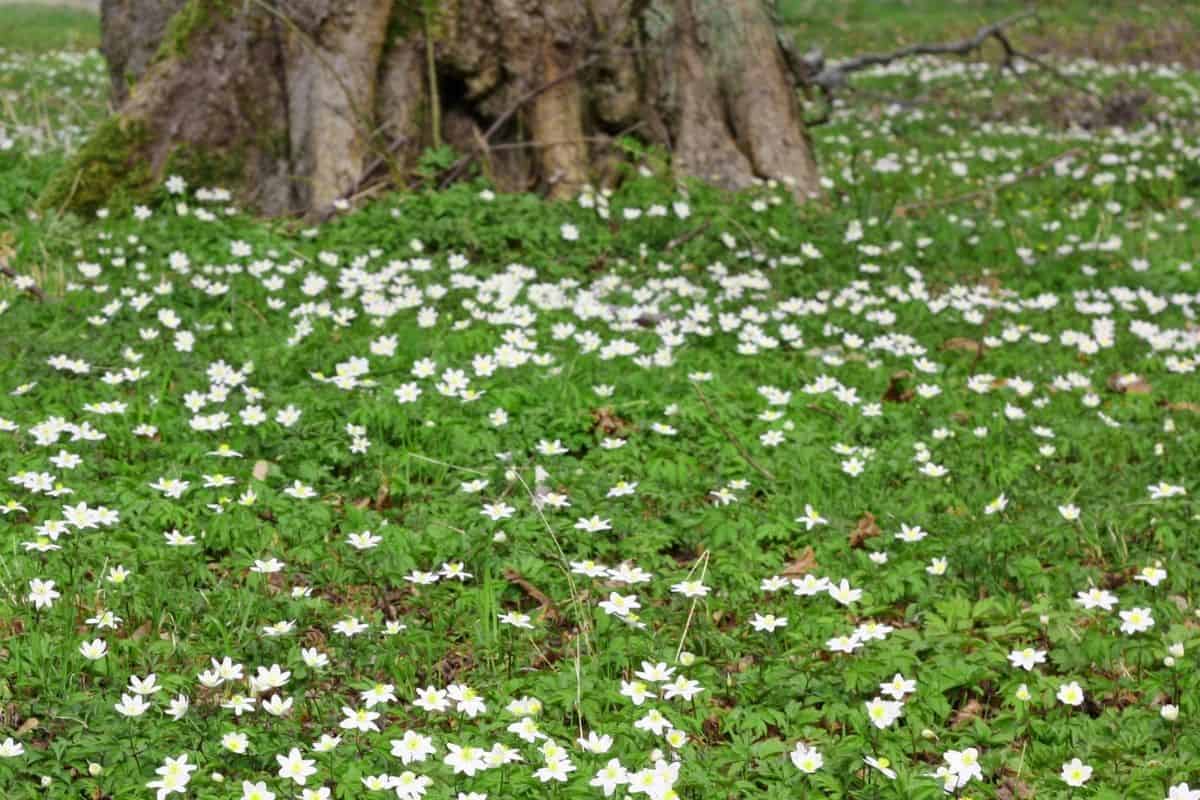
Wood anemone is a low, delicate plant that has three stalked, deeply cut leaves and one stalked white or pink flower on the end. It grows 4-8 inches tall and blooms in April, May, and June.
In its native habitat, it will grow in woodlands or along forest edges. It likes medium water, moist soil, and part to full shade. This flowering plant will form colonies and works well for a ground cover.
4. Eastern Blue Star (Amsonia tabernaemontana)
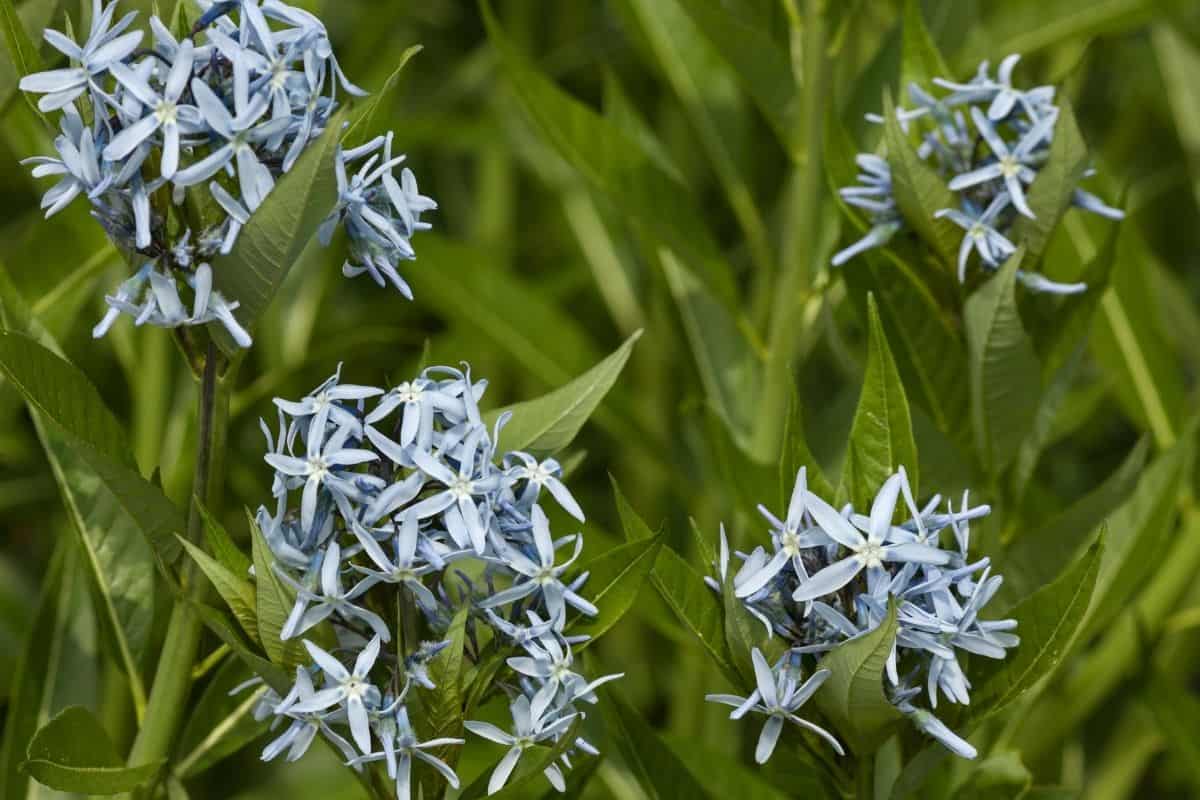
Eastern blue star is known by several other names, including blue dogbane, willow Amsonia, and woodland Bluestar. It grows about 1-3 feet tall and forms large, multi-stemmed clumps.
It’s part of the dogbane family and the blue, tubular flowers can form a star shape, which is where it gets its common name.
Sometimes the flowers will also be purple or darker blue. They bloom from March to May. The Easter blue star does well in part shade and wet to moist soil. For best results, you can cut it back after flowering.
5. Swamp Milkweed (Asclepias incarnata)
Swamp milkweed is one of several milkweeds and they all have one thing in common: birds and pollinators love them. The pink and purple blooms on this variety will look beautiful in your garden and will attract many types of native birds. They grow from 2-5 feet tall and bloom from June to October. They like full sun to part shade and use a lot of water.
Swamp milkweed needs wet, moist soil. It thrives in swampy conditions.
6. Spanish dagger (Yucca aloifolia)
Spanish dagger is also called Spanish bayonet and aloe yucca. It’s a slender stemmed plant that can grow 6-12 feet tall, and sometimes even taller when mature.
This plant is a cactus/succulent and does best in low water and dry soil, with lots of sun. It will bloom white flowers in June and July. Often used as an ornamental, you should be careful of where you place it in the landscape because it has sharp leaves. They germinate quickly from seed.
7. Dwarf crested iris (Iris cristata)
The dwarf crested iris is a small iris with small clusters of narrow, pointed leaves that grows only about 4-16 inches tall. It has blue-violet flowers with a central yellow or white center and a purple striped band.
The flowers are about 2 ½ inches across and bloom from March to May. The blooms can range from different shades of blue and purple or even white.
This iris likes moist, acidic soil with medium water requirements. It prefers part shade to full shade, and it is heat tolerant. It will also attract hummingbirds and bees.
8. Red milkweed (Asclepias rubra)
Another milkweed native to the state that birds love is red milkweed, also known as tall pink bog milkweed. It’s a tall plant, around 16-40 inches in maturity.
The flowers bloom in shades of red, pink, or purple from May to August. It will bloom in late spring to early summer. This milkweed likes high water usage, moist to wet soil, and full sun to part shade. It’s also a larval host to the Monarch butterfly.
9. Plantain pussytoes (Antennaria plantaginifolia)
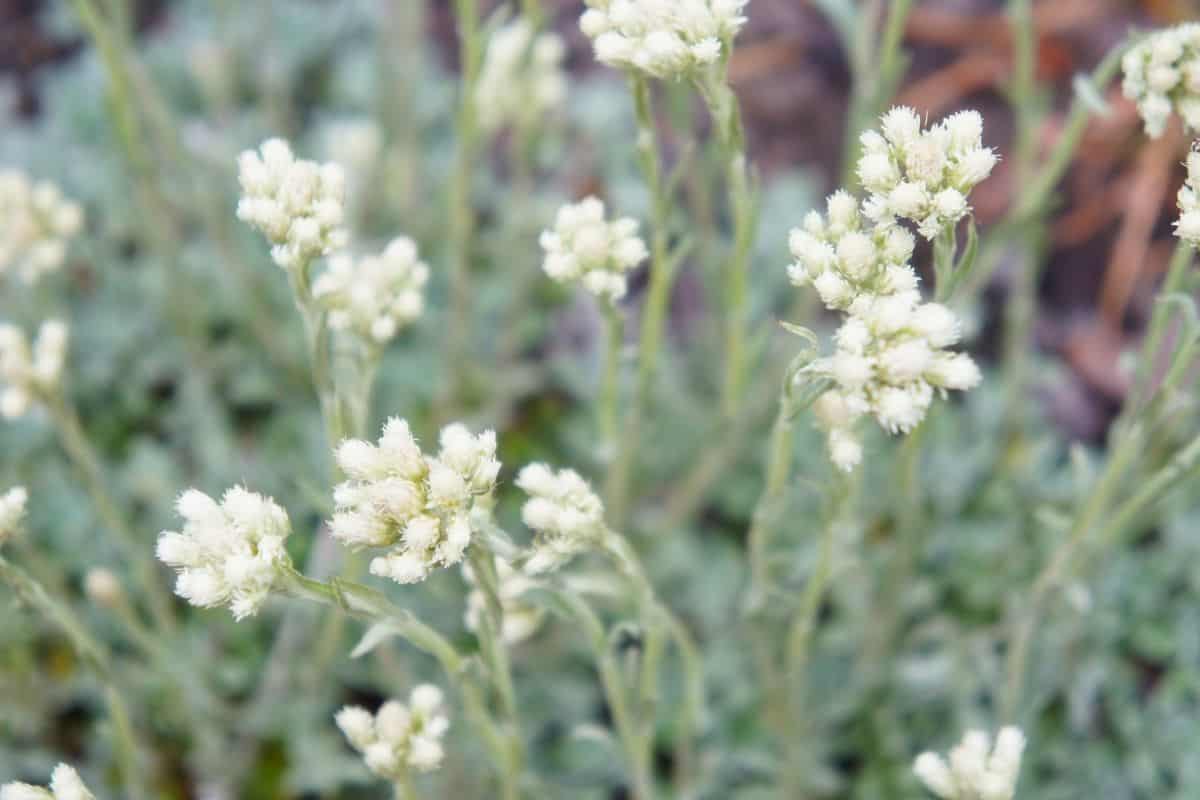
This plant is also called women’s tobacco. It looks a bit like cat toes/feet, which is where its other common name comes from.
Several blossoms will bloom at the top of a long stem. They grow 1-3 inches tall and have a spread of 12-24 inches. They do best in hardiness zones 3-8. They like full sun and average to dry soil. The blooms are white and appear in the spring. This is a great choice for a groundcover or a rock garden.
10. Mistflower (Conoclinium coelestinum)
Mistflower is sometimes called blue mistflower or blue boneset. While birds love it, it also attracts bees and butterflies. It does spread quickly and can become a pest when it is not controlled. It usually grows about three feet high.
The short-stemmed flowers form in clusters at the top. The flowers are shades of blue and purple and bloom from July to November. It likes full sun to part shade and medium water with moist soil.
11. Tall coreopsis (Coreopsis tripteris)
Tall coreopsis is also called tall tickseed. It’s a member of the aster family and grows tall, bright yellow flowers that look a bit like small sunflowers.
This plant grows from 3-9 feet tall, and the yellow petals are rounded on the tips. They bloom from July to September, bringing late-season blooms for you and the birds to enjoy. They prefer part shade and moist soil conditions. They will also attract butterflies.
12. Eastern purple coneflower (Echinacea purpurea)
This flower is also called just the purple coneflower. It grows 2-5 feet tall and at the end of the tall stems are long-lasting lavender-purple flowers. It has a spiny, brownish central disk that gives it the classic coneflower look.
The blooms can sometimes have a pinkish shade to them, and they bloom from April all the way through to September, so you get a lot of beauty with this choice.
13. Narrowleaf sunflower (Helianthus angustifolius)
If you love sunflowers, this is a great choice. It’s also part of the aster family and is sometimes called swamp sunflower.
Narrowleaf sunflower grows 1-3 feet tall and blooms yellow flowers on the top of the tall stems. It blooms in October, providing some late-season color to your garden or landscape. It likes medium water and wet soil with part shade.
14. Appalachia sunflower (Helianthus atrorubens)
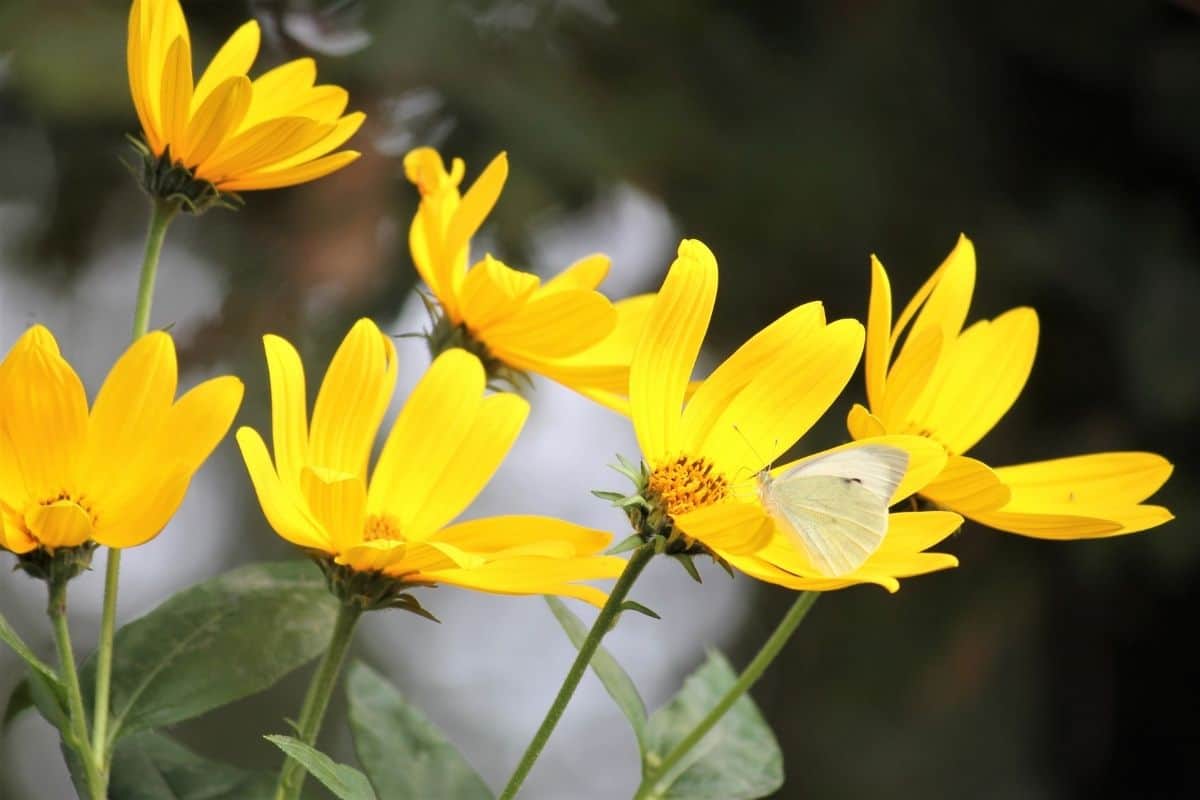
Another beautiful sunflower choice is the Appalachia sunflower. It’s sometimes called the purpledisk sunflower. Native to this area, it is a beautiful yellow flower with dark disk flowers in the center.
The large sunny flowers bloom first in mid-summer and continue into late fall. It likes full sun to part shade and moist, well-draining soil. It will attract birds as well as bees and other pollinators. It’s often found in coastal areas of the state, the mountains, and in Piedmont.
15. Rough blazing star (Liatris aspera)
Rough blazing star has beautiful lavender blooms that grow up a tall, slender stalk. They are shorter than other Liatris species and they will attract butterflies and hummingbirds as well. They grow 2-3 feet tall and bloom from August to September. They do best with full sun and dry to medium soil.
16. Black-eye Susan (Rudbeckia hirta)
Black-eye Susan has a very distinct look. It’s part of the aster family and the brown to black disk flowers in the center create the “eye” of the flower, with the yellow flowers going around the outside.
It grows 1-3 feet tall and blooms from June to October. It’s a very showy plant that will make a big impression in your garden or landscape. It’s a friend to birds but also to bees, butterflies, and other pollinators.
17. Golden ragwort (Packera aurea)
Golden ragwort will make a nice addition to your bird-friendly garden. It’s also a member of the aster family and looks similar to Black-eye Susan but has a yellow or golden colored disk center instead of the black/brown.
Golden ragwort is sometimes also called golden groundsel or butterweed. It grows 1-3 feet tall and the yellow flowers bloom from March to August, making it a long-blooming plant. It does well in full sun to part shade or shade and with moist, acidic soil.
18. Common cup plant (Silphium perfoliatum)
Common cup plant is sometimes called Indian cup. It’s another plant in the aster family and it looks very similar to other yellow blooming asters on this list. The disk center is smaller than on the Black-eye Susan and golden ragwort.
It grows 3-6 feet tall and blooms many of these composite flowers at the end of its tall stems. The leaves form a small cup that holds water and attracts birds who come to drink.
It blooms from July to September and likes full sun. It is drought-tolerant but prefers wet to mesic soil.
19. Long-stalked aster (Symphyotrichum dumosum)
And finally, long-stalked aster is another choice that birds will love, and you will as well. They grow from 12-48 inches tall and branch a bit, with bushy flowers at the ends. It’s sometimes also called bushy American-aster for this reason.
The flowers can be blue to purple, pink to red, or white. Birds love it, as well as butterflies and other pollinators.
Now that you know about these great bird-friendly native plants in the Tarheel State, let’s look at some commonly asked questions.
North Carolina native plants list FAQ
If you have questions about native plants in North Carolina and you don’t see them answered here, feel free to leave us a comment. We’ll do our best to answer or find out for you.
Where can I buy native plants in North Carolina?
If you’re looking to buy native plants in NC, a good place to look is at local nurseries that specialize in native plants. You can also check out local botanical gardens such as the NC Botanical Gardens in Chapel Hill. You can learn about more native plant sources here.
What is North Carolina’s wildflower?
The “Carolina Lily” is North Carolina’s wildflower. The scientific name is Lilium michauxii and it was declared the official state flower in 2003.
What are some small native trees in North Carolina?
If you’re looking for smaller trees (up to 25 feet), then consider the following: Pawpaw, serviceberry, devil’s walkingstick, American hornbeam, fringe tree, flowering dogwood, Washington hawthorn, Carolina silverbell, American holly, red cedar, umbrella tree, persimmon, and hoptree.
What are some large native trees in North Carolina?
If you’re looking for larger native trees (over 25 feet), consider the following: Red maple, sugar maple, yellow birch, the pignut hickory, yellowwood, sweet birch, tulip tree, chestnut oak, red oak, cucumber tree, sycamore, American linden, and Carolina hemlock.
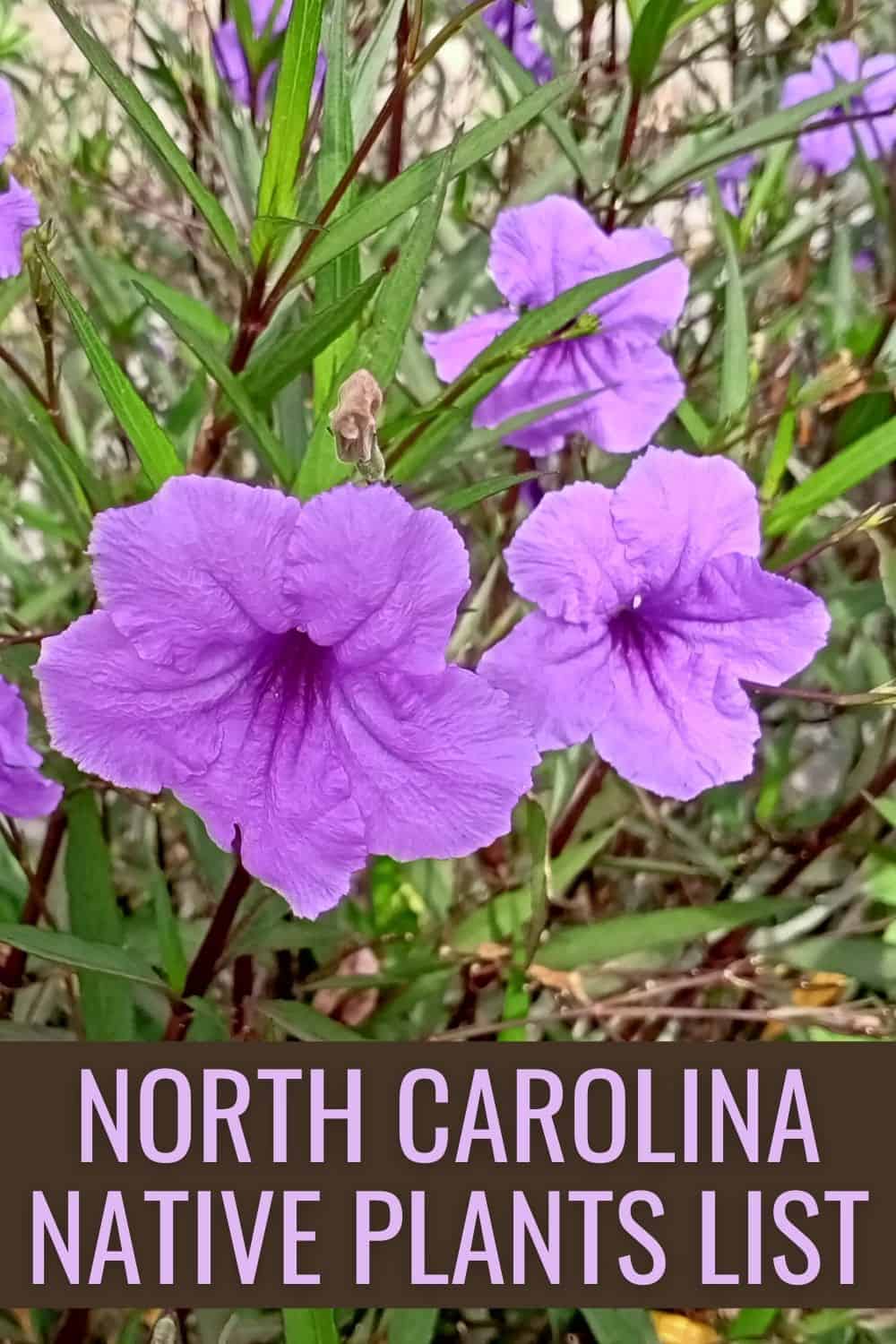

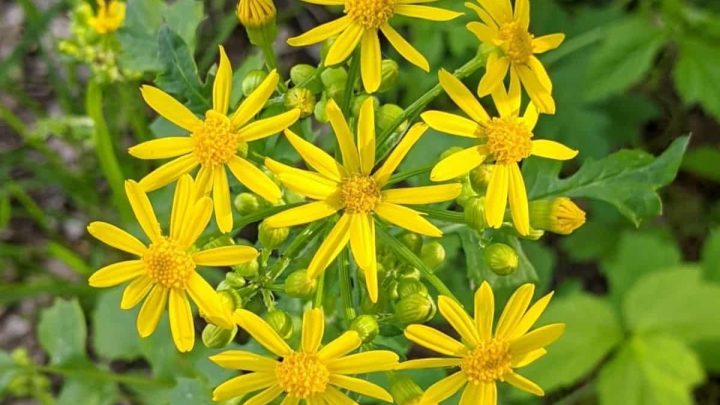















Florida Native Plants List - 10 Flowers That Bloom With Beauty
Tuesday 28th of February 2023
[…] North Carolina native flowers […]
Alabama Native Plants List - 7 Amazing Flowers For Your Garden
Tuesday 14th of February 2023
[…] North Carolina native flowers […]